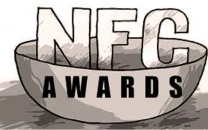Full spectrum: 3G, 4G or 5G – country needs to find solution
Together with 3G, government should auction whatever 4G spectrum that can be made available.

According to GSMA, the global body for GSM mobile operators, one in five mobile broadband connections will be 4G/LTE by 2017. CREATIVE COMMONS
Finally, with the international consultants in place, the Pakistan Telecommunication Authority (PTA) is moving towards spectrum auction for wireless broadband networks.
As an ICT professional, I am often confronted with the question whether it is a good thing that Pakistan is pressing ahead with spectrum auction in the 1900-2100 MHz (megahertz) band, that is predominantly used for 3G (therefore, is also called ‘3G spectrum’), despite the fact that 4G is now being rolled out in many countries?
Mostly the question comes from those who are not too much into communications technology, but then even some of my “technologically literate” friends wonder about it. Before I venture to attempt an answer to the question let us look at the situation on the ground.
For 4G
Asking for 4G is actually justified. 4G already covers 20% of the global population and is projected to cover half the world by 2017. There will be nearly a billion 4G connections by then. According to GSMA, the global body for GSM mobile operators, one in five mobile broadband connections will be 4G/LTE by that year, leaping from about 176 million at this point in time, as the number of networks doubles to 465 across 128 countries.

4G offers higher speeds and capacities, which will be desperately needed not only by us humans, but also by our machines, as they start talking to each other more and more.
It does not stop here, the European Commission is co-funding development of 5G (700 million euros over the next seven years), and countries like South Korea are announcing that 5G would be deployed latest by 2020. Should we still be inviting investors to invest in the spectrum that is mainly used for 3G?
And now the other side of the coin.
How many have 4G enabled devices? Be it cellphones, tablets, phablets, laptops and/or dongles for PCs – we don’t have them. On the other hand, everyone with a smartphone today (roughly 10% of us) is equipped for 3G, meaning that as soon as the infrastructure is rolled out we will be able to start using 3G.
Infrastructure
Look at the infrastructure side. Those who work in ICT space, know that almost all cellphone operators in the country have upgraded their installed equipment to make it “3G-ready”. This is partly because in the last three to four years, governments have been announcing 3G spectrum auctions.
I don’t mean to advocate an older technology just because the operators have readied themselves for it, it is for the benefit of ordinary users. It is due to this readiness that 3G services can be launched in relatively much shorter time, after the spectrum allocation is done by the government.
Then it’s the frequency spectrum that is available right now, and that too for three operators (a minimum number to ensure competition). Most of the nearly 2 billion 3G subscribers in the world today use this 1900-2100 frequency band. Therefore, due to the economies of scale reached in 3G devices and equipment, 3G comes out to be much cheaper for the ultimate users (the masses).
In other words, not only 3G is available immediately, it is also going to be cheaper for the users.
Wisely, the government decided to keep the spectrum auction “technology neutral”, which means the operators can roll out whatever technology (3G or 4G) that they feel would make the most business sense. The government is not calling it “3G spectrum”, rather “next generation wireless technology spectrum”.
But in reality, trying to go for 4G in the offered frequency band (1900-2100) would be more expensive as the economies of scale of this band in case of 4G/LTE are not there. Therefore, the broadband penetration on a larger scale with 4G alone in this band would be extremely difficult to achieve anytime soon.
In any case this band is used all over the world predominantly for 3G, which means, technology neutral or not, the investors would most likely go for 3G (most probably evolved 3G/HSPA)!
Left behind
However, the fact that we have been left far behind others, who are going for 4G/5G, is too critical to be ignored. There are two more factors that are difficult to ignore for the government – the PML-N manifesto promises 4G, and the great desire of the finance minister, who heads the auction committee, to generate more funds from this auction.
Thus, there are compelling reasons in favour of both technologies. In my opinion, for these seemingly contradictory targets, there is a solution. And that is that together with 3G spectrum, the government should also auction whatever ‘4G spectrum’ that can be made available in this short time!
This will not only be in line with today’s global trend to auction spectrum in multiple bands at the same time, but also that the end-result will be “best of both the worlds”. On one side, wireless broadband will become available immediately and cheaply through 3G, and on the other side, actual groundwork will begin for 4G!
The writer is a former CEO of Universal Services Fund, Ministry of IT and is currently working as ICT consultant in many countries
Published in The Express Tribune, December 30th, 2013.
Like Business on Facebook, follow @TribuneBiz on Twitter to stay informed and join in the conversation.



















COMMENTS
Comments are moderated and generally will be posted if they are on-topic and not abusive.
For more information, please see our Comments FAQ